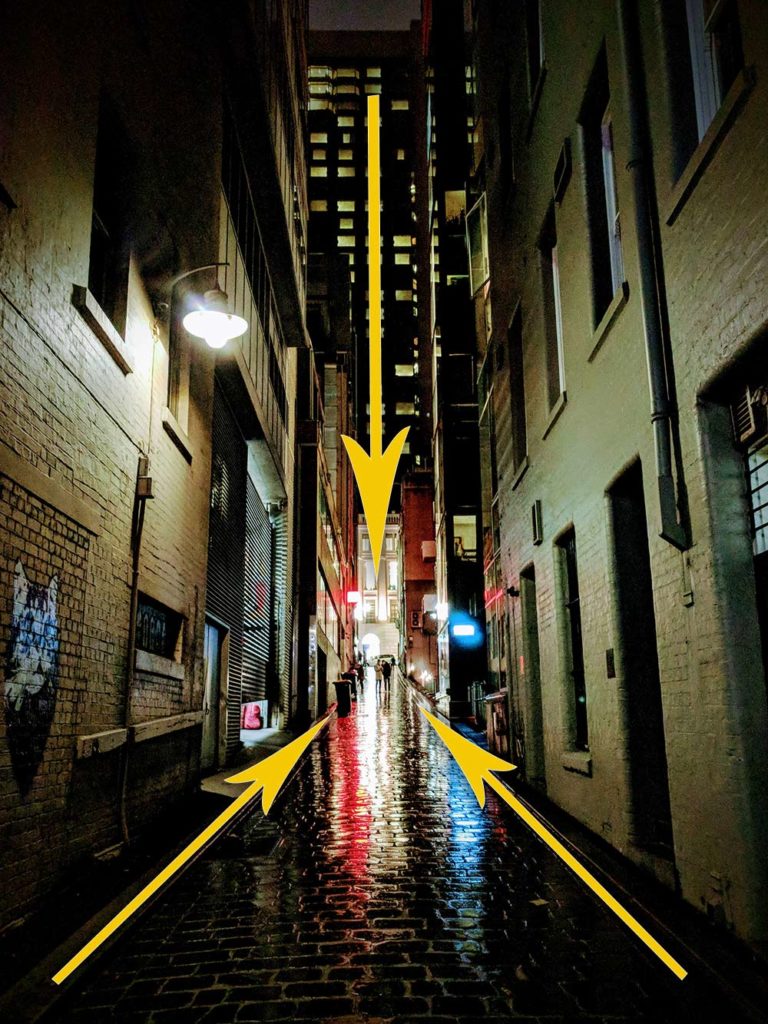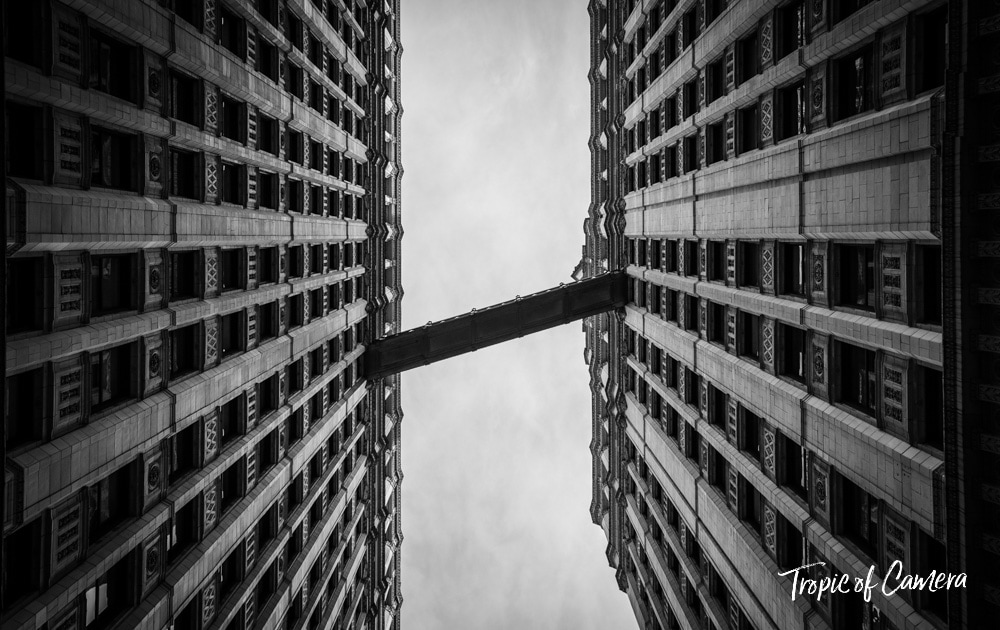Ever wondered why a photograph of a road going into the distance is so eye catching? Or even a simple photo of train tracks draws the eye to the centre of the picture?
One of the reasons why you’re drawn to pictures like this is because of leading lines. Leading lines draw the viewer in the direction of the line, whether that’s to the centre of the picture or across the frame.
Leading lines are also a really simple way to up your photography game and the great thing is, you don’t need a fancy camera to do them well. It’s all about framing.
Take for example, the above photograph of the path across the Grand Prismatic Spring in Yellowstone National Park.
Or this recent photo I took in Melbourne on a rainy night. You’re immediately drawn to the centre of the image because the buildings and the narrow alley are pointing in that direction.

How to look for leading lines in photography
Stop and look at your surroundings. Where is your eye drawn to? Are there any straight lines that the eye can follow?
There are two key types of leading lines – natural and man-made. While I’ll go into more detail with examples below, some of these include:
| Natural | Man Made |
|---|---|
| Trees | Bridges |
| Hiking or walking trails | Roads |
| Rivers | Dams |
| Edges of water | Piers and jetties |
| Rocks | Rail and tram lines |
| Zen Gardens | Buildings |
| Star trails and the Milky Way | Flags and decorations |
| Cliffs | Signs and directions |
| Mountains | Long exposure of traffic – light trails |
Think about how you’re going to frame the shot. The eye is drawn across the camera from top left to bottom right corner. Can the lines converge to a point of interest?
This process takes time – sometimes it’s immediately obvious what the leading lines are, in the case of the Melbourne alleyway. Sometimes you’ll have to work a little bit harder. Take lots of shots and experiment with your position. Would this photo be better from a higher or lower angle?

Common examples of leading lines
Before I go into this list, your safety is the first priority! Don’t take photos on train, rail or tram tracks that are in use. Don’t stand in the middle of a busy road to get a shot. Be aware of your surroundings at all times.
Roads and paths

Trees

Rail and tram lines

Buildings




